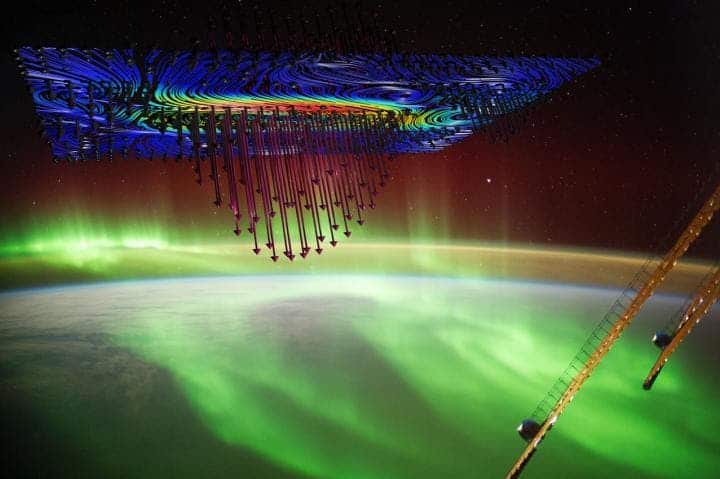
Those closer to the North or South poles are privileged to witness some of nature’s most dazzling ‘fireworks’. These spectacular light shows, known as the aurora borealis in the northern hemisphere and aurora australis in the southern hemisphere, are produced when Earth’s sheltering magnetic field interacts with certain kinds of solar storms. Now, scientists at the University of Iowa have reported exactly how auroras are created, performing experiments whose results perfectly match the theory.
Electrons ‘surfing’ on waves of electric fields
Writing in the journal Nature Communications, the physicists explain that the brilliant auroras are generated by powerful electromagnetic waves known as Alfven waves. These waves accelerate a small population of electrons towards Earth’s magnetic field, similar to how a surfer catches a wave and is continually accelerated as the surfer moves along with the wave.
But it’s not like scientists have been in the dark so far. For decades, scientists have designed models that describe the physical mechanisms by which energized particles emanating from the sun interact with Earth’s magnetic field and collide with oxygen and nitrogen molecules in the upper molecules. These excited molecules respond by emitting light in various colorful hues, lighting the night’s sky.
Yet although these models have been validated by some observations, such as measurements of Alfven waves taken by spacecraft that traveled above auroras, some limitations inherent to these spacecraft and rocket measurements had prevented a definite confirmation of the theory.
These challenges were overcome by the physicists at the University of Iowa through a series of experiments conducted at the Large Plasma Device lab located at UCLA’s Basic Plasma Science Facility.
The setup was rather challenging, requiring precise measurement of a very small population of electrons, numbering less than one in a thousand of the electrons in the plasma itself, traveling down the chamber of the Large Plasma Device at nearly the same speed as the Alfven waves.
Using a combination of numerical simulations and mathematical modeling on the results of the experiments, the researchers confirmed the theory that electrons “surf” on the wave of an electric field. This phenomenon is formally known as Landau damping, after Russian physicist Lev Landau who first proposed it in 1946.
“The idea that these waves can energize the electrons that create the aurora goes back more than four decades, but this is the first time we’ve been able to confirm definitively that it works,” says Craig Kletzing, professor in the Department of Physics and Astronomy at Iowa and a study co-author. “These experiments let us make the key measurements that show that the space measurements and theory do, indeed, explain a major way in which the aurora are created.”
Auroras have always fascinated people with their beauty. But the science behind them is certainly no less intriguing. Who knows what secrets they might have to share in the future.









